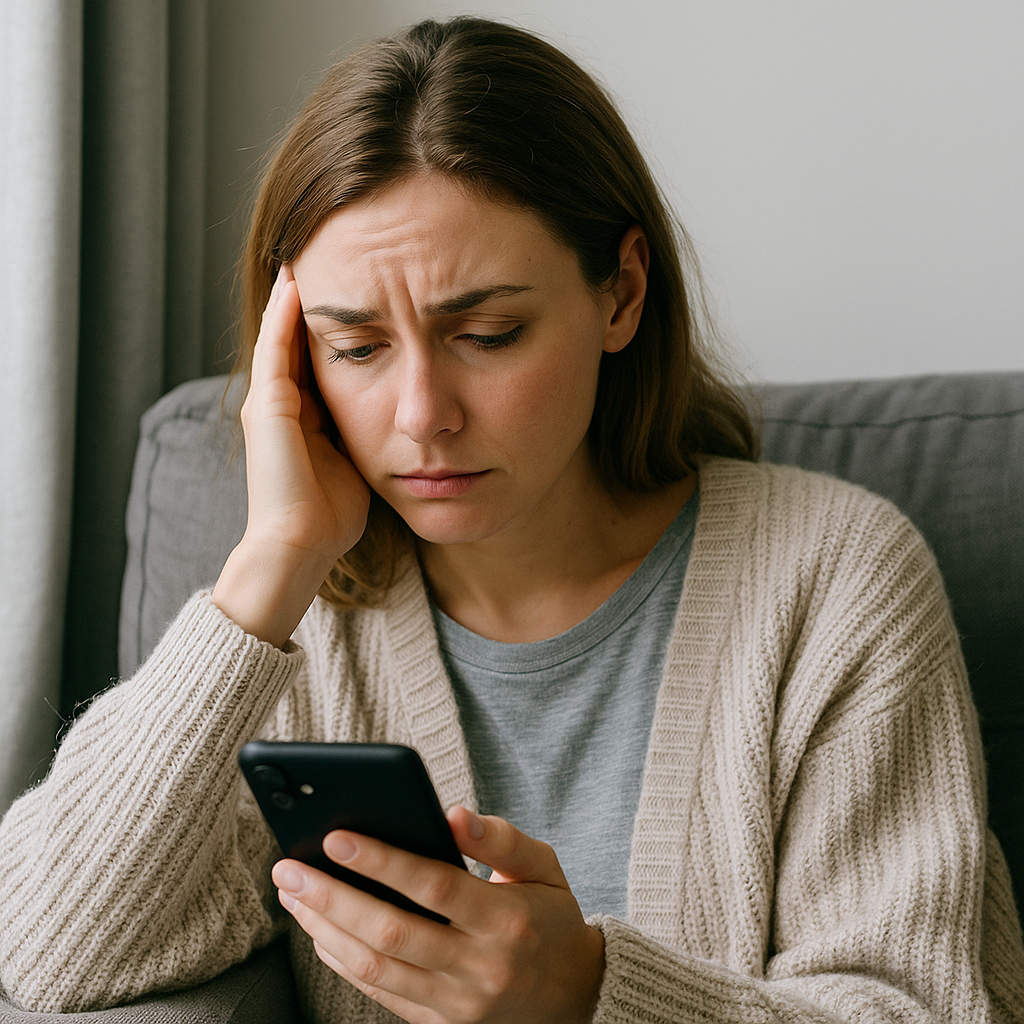What Is Anxiety and Why Does It Happen?
Feeling anxious is a universal experience—many people associate it with butterflies in the stomach before a presentation or sweaty palms ahead of a big interview. At its core, anxiety is meant to alert the body and mind to possible threats, so you’re prepared to act. However, when these anxious responses linger long after the stressful event, or occur even when there’s no apparent threat, they can start to disrupt everyday life. Understanding what prompts anxiety is the first important step toward calm. These anxious responses stem from both biological and environmental factors. Genetics, brain chemistry, and even traumatic life events can make someone more likely to experience anxiety. Sometimes, ongoing pressures like work stress, relationship struggles, or financial worries keep the body’s alarm system turned on long-term. For those interested in taking proactive steps, online anxiety support services provide discreet, convenient ways to start building healthy coping habits, with resources tailored to those who need flexible, accessible guidance.
National data highlight just how widespread anxiety is—studies suggest nearly 20% of adults in the United States grapple with some form of anxiety disorder in any given year. Recognizing that anxiety isn’t just “in your head,” but a complex interplay of genetics, environment, and learned behaviors helps reduce the stigma around seeking help. Open conversations with friends, family, or trusted professionals can further normalize the challenges and help individuals feel less alone. Having the correct information gives you the power to regain control, rather than feeling driven by unwanted worry.

How Anxiety Affects Everyday Life
Anxiety is often thought of as just a mental burden, but its effects run much deeper. The impact can ripple into all corners of daily life, from routine decisions to core relationships. Some people notice it physically, with symptoms like rapid heartbeat, muscle tightness, stomach aches, and difficulty sleeping. Others experience racing thoughts—a constant hum of “what ifs” that make concentrating or relaxing feel impossible. Over time, these patterns can erode self-confidence, affecting personal and professional ambitions.
For example, someone who once enjoyed meeting friends for coffee might start dodging invitations, overwhelmed by imagined worst-case scenarios. Minor choices, such as picking out groceries or responding to emails, may prompt an exaggerated sense of fear or indecision. When anxiety interrupts sleep for days on end or causes irritability in close connections, the effects become even more pronounced. Recognizing these warning signs early empowers individuals to intervene with supportive changes before anxiety feels unmanageable. This mindset—of seeing anxiety as a daily challenge rather than a defining trait—opens the door to resilience and recovery.
The Power of Small, Daily Changes
Meaningful progress in managing anxiety doesn’t always come from big leaps; often, it’s the small, consistent changes that have the longest-lasting effects. For instance, building a morning routine that includes a moment of mindfulness—simply focusing on your breath or enjoying a cup of tea without distractions—creates an anchor for the rest of your day. Keeping a gratitude journal, even if you jot down just one thing each night, can shift perspective from focusing solely on worries to recognizing small positives.
In a comprehensive summary by Verywell Mind, methods like breathing exercises and grounding techniques demonstrated a significant reduction in reported anxiety symptoms when practiced regularly. Consistency is the secret ingredient—by repeating healthy habits, you reinforce new neural pathways in the brain, making it easier to manage anxiety in the future. Even when progress feels slow, each small step is a building block for a calmer, more balanced life. If you miss a day or face setbacks, remember that every moment offers a new chance to try again, without judgment.
Quick and Practical Relaxation Techniques
- Square Breathing: When you feel your pulse rising, try this method: inhale for four counts, hold your breath for four counts, exhale for four, and pause for another four. This approach harnesses the body’s natural rhythms to quiet the nervous system, making tense moments feel far less overwhelming.
- The 5-4-3-2-1 Grounding Exercise: Look around and list five things you see, four you can touch, three you hear, two you can smell, and one you can taste. This exercise gently redirects your attention from anxious thoughts to the immediate environment, returning you to the present.
- Progressive Muscle Relaxation: Start at your toes and work up the body, tensing each muscle group for a few seconds before letting go. By physically releasing tension, the mind often follows suit, offering an opportunity to hit the reset button when anxiety spikes.
These practical techniques fit almost any setting—use them while waiting in line, during a stressful meeting, or as part of a nightly wind-down. Experiment with combining more than one exercise and make them a routine part of the toolbox. Many people find this conscious shift helps break the cycle of tension before it becomes overwhelming.
How Movement Helps Calm the Mind
The mind and body are deeply connected, and moving your body naturally helps manage anxious energy. Exercise boosts levels of endorphins and serotonin, often called ‘feel-good’ chemicals, which are directly tied to improved mood and reduced stress. You don’t have to become a marathon runner to see these benefits—even light movement creates positive changes in the brain and body.
Walking outdoors, stretching for a few minutes, or doing gentle yoga can break up anxious thought loops and offer a valuable break from stress. Many people find that getting sunlight or feeling fresh air as part of their activity lifts their spirits even more. The beauty of using movement as a calming tool lies in its flexibility: it can take as little as 10 minutes and requires no special skills or equipment. Each day presents a chance to move in a good way, whether that means a peaceful walk or an energetic dance in the living room.
Recognizing When to Seek Support
While do-it-yourself strategies can go a long way, there are moments when outside help becomes essential. If anxiety becomes an almost constant companion—showing up as endless worry, sleep struggles, or an inability to go about daily responsibilities—connecting with a mental health professional is often the wisest next step. Therapy and support groups offer encouragement, new perspectives, and practical coping skills in a safe, understanding environment.
Nowadays, more people are turning to online communities and resources for support. Virtual programs make accessing help easier for those with tight schedules, mobility limitations, or barriers like stigma and cost. The reassurance of knowing you’re not alone and having guidance from trained professionals or empathetic peers can be life-changing. Taking that first step—sending a message, joining a forum, or scheduling a consultation—often opens the door to a sense of relief and hope.
How Science Supports Online Anxiety Resources
With the growth of digital mental health tools, the landscape of anxiety care has evolved rapidly in recent years. Research has consistently shown that online anxiety support resources—such as digital therapy, guided meditations, and self-help programs—are not just convenient, but often as effective as traditional in-person care for many users. For instance, a comprehensive review of recent studies illustrates that these options can lead to noticeable improvements in anxiety, particularly for those who may not have access to local specialists.
The ability to seek care from home, fit sessions into busy calendars, and experiment with various approaches makes digital support ideal for modern lifestyles. Moreover, science supports using these platforms as a stepping stone for long-term wellness, helping more people access the help they need. Trying online modalities can make the difference for those who value privacy, flexibility, and easily accessible solutions in their journey to better mental health.
Building a Supportive Routine for Long-Term Calm
Creating a stable, supportive routine is one of the most reliable ways to maintain lower anxiety levels over time. Instead of seeking perfection, experiment with different practices until you find a sustainable and rewarding combination. Blending breathing techniques, gratitude journaling, regular movement, and meaningful connection with others makes a strong foundation for peace of mind.
Permit yourself to change strategies as your needs evolve. Some seasons may call for more social support, while others might highlight the importance of rest or creativity. As you build these habits, reflect regularly on what’s working and what feels forced. Remember, lasting calm doesn’t come from eliminating all stress, but from equipping yourself with practical, reliable skills—tiny steps that, over time, transform how you move through the world. The journey takes patience and kindness toward yourself, and every choice to care for your mental health is a victory worth building on.







